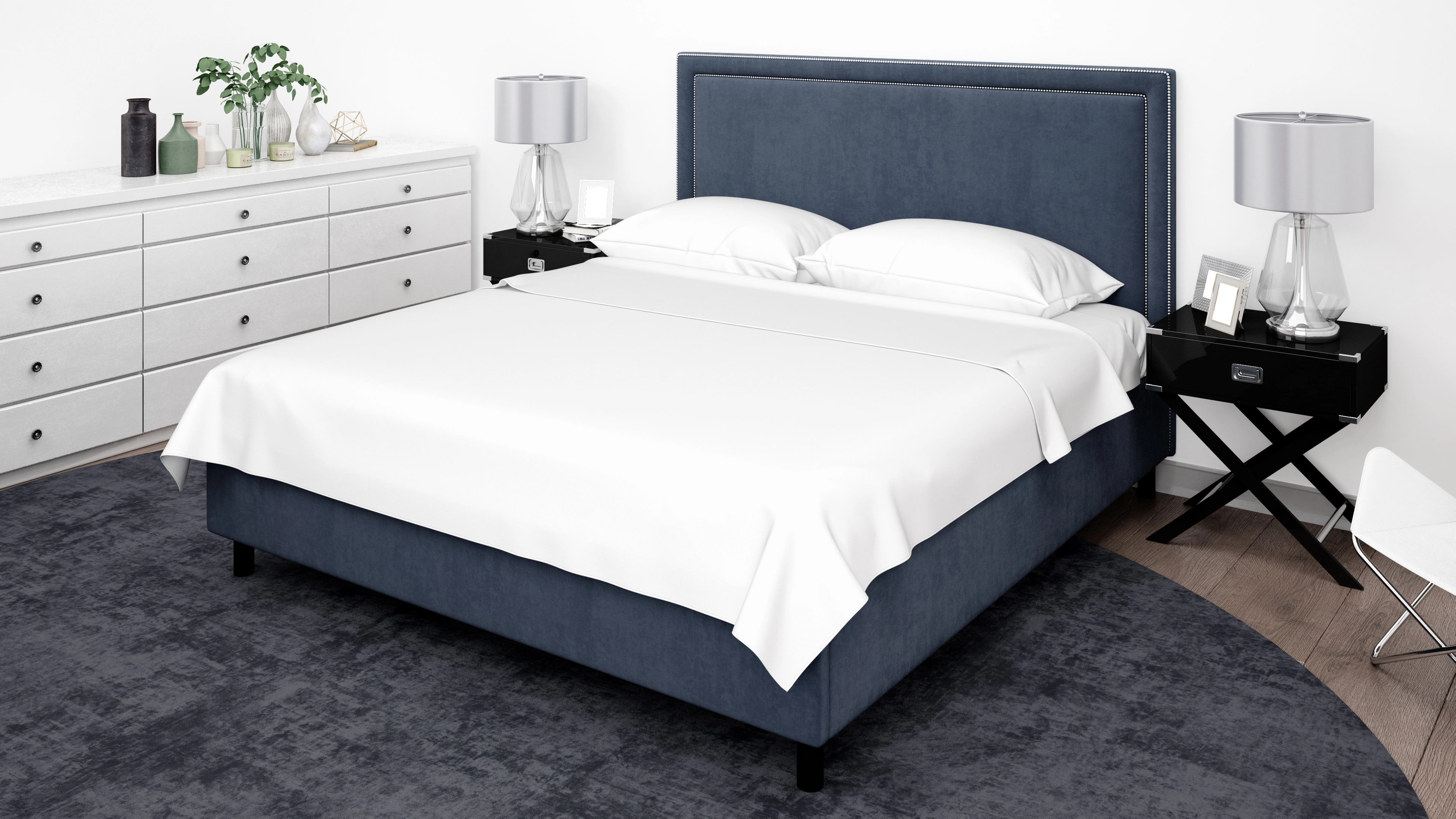Placing a rug in a small bedroom can transform the space, adding warmth, style, and a sense of comfort. However, the limited space presents unique challenges that require thoughtful consideration. This guide will help you navigate these challenges and make the most of your rug placement in a small bedroom, ensuring both functionality and aesthetic appeal.
Understanding the Purpose of a Rug in a Small Bedroom
Before diving into the specifics of rug placement, it’s essential to understand the primary purposes a rug serves in a small bedroom:
- Aesthetic Enhancement: A well-chosen rug can complement your bedroom’s decor, adding color, texture, and pattern that ties the room together.
- Comfort and Warmth: Rugs provide a soft surface underfoot, making the room feel cozier and more inviting, especially in colder climates.
- Noise Reduction: Rugs can help dampen sound, creating a quieter, more serene environment conducive to rest and relaxation.
- Defining Space: In a small bedroom, a rug can delineate different areas, such as the sleeping zone and a small reading nook or workspace.
Choosing the Right Rug
1. Size Matters
The size of the rug is crucial in a small bedroom. Too large, and it can overwhelm the space; too small, and it may look out of place.
- Under the Bed: A common rule of thumb is to have the rug extend at least 18-24 inches beyond the sides and foot of the bed. For a twin or full-sized bed, a 5×8 or 6×9 rug typically works well. For a queen bed, a 6×9 or 8×10 rug is suitable. King beds might require an 8×10 or larger rug.
- Partial Placement: If the room is very small, consider placing the rug partially under the bed, with the lower two-thirds of the bed on the rug. This saves space while still providing the benefits of a larger rug.
2. Material and Texture
The material and texture of the rug should align with the room’s function and your lifestyle.
- Softness: For a bedroom, softer materials like wool, cotton, or high-quality synthetic blends are ideal, providing comfort underfoot.
- Durability: Consider how much foot traffic the rug will endure. Bedrooms generally have lower traffic, so you can opt for softer, more delicate materials if desired.
- Maintenance: Choose a rug that is easy to clean and maintain, especially if you have pets or allergies. Natural fibers like wool are durable and often easier to clean.
3. Color and Pattern
The color and pattern of the rug should complement the existing decor while also enhancing the room’s perceived size.
- Light Colors: Lighter shades can make a small room feel larger and more open.
- Patterns: Subtle patterns can add interest without overwhelming the space. Stripes, for example, can create an illusion of length or width depending on their orientation.
Rug Placement Strategies
1. Centered Under the Bed
Placing the rug centered under the bed is a classic and popular option. This placement creates a cohesive look and ensures that the rug is the focal point of the room.
- Full Coverage: The rug should cover the area under the bed and extend beyond the sides and foot, providing a soft landing spot when you get out of bed.
- Symmetry: This arrangement creates a balanced and symmetrical appearance, which is pleasing to the eye.
2. Partial Under the Bed
In very small bedrooms, a full-sized rug may not be practical. Placing a rug partially under the bed is an effective alternative.
- Foot of the Bed: Position the rug so that it starts just under the foot of the bed and extends outwards. This saves space while still offering the visual and functional benefits of a rug.
- Side Coverage: Ensure the rug extends slightly beyond the sides of the bed, providing enough coverage for stepping out.
3. Beside the Bed
Another option is to place a runner or smaller rug beside the bed. This works well if you have limited space or want to add a touch of comfort without a large rug.
- Single Side: Place a single runner on one side of the bed, ideally the side you get out of most often.
- Both Sides: For a symmetrical look, place runners on both sides of the bed. This works particularly well in narrow bedrooms.
4. At the Foot of the Bed
Placing a rug at the foot of the bed can add a decorative element without taking up too much space.
- Bench or Ottoman: If you have a bench or ottoman at the foot of the bed, the rug can extend slightly beyond it, framing the area nicely.
- Stand-Alone: Even without additional furniture, a rug at the foot of the bed can create a defined space, making the room feel more finished.
5. Layering Rugs
Layering rugs can add depth and texture to a small bedroom, creating a cozy and stylish look.
- Base Layer: Start with a large, neutral rug as the base. This rug can be simpler in design and cover most of the floor space.
- Top Layer: Add a smaller, more decorative rug on top. This rug can have more intricate patterns or vibrant colors, adding visual interest.
Practical Considerations
1. Furniture Arrangement
Consider how the rug placement will affect the arrangement of other furniture in the room.
- Nightstands: Ensure that nightstands and other bedside furniture sit comfortably on or off the rug without wobbling.
- Dressers and Desks: If placing a rug under these pieces, make sure the rug is large enough to accommodate them without appearing too cramped.
2. Door Clearance
In small bedrooms, door clearance can be an issue.
- Measure Clearance: Before purchasing a rug, measure the clearance under doors to ensure the rug won’t impede their movement.
- Low-Pile Rugs: Opt for low-pile or flatweave rugs that won’t add too much height and interfere with door operation.
3. Safety and Stability
Safety is a crucial consideration, especially in small spaces where tripping hazards are more likely.
- Non-Slip Pads: Use non-slip pads under rugs to prevent them from moving or bunching up.
- Secure Edges: Ensure that rug edges are secured and not curled up, which could cause tripping.
Styling Tips for Small Bedrooms
1. Color Coordination
Coordinate the rug’s color with other elements in the room to create a harmonious look.
- Accent Colors: Choose a rug that incorporates the room’s accent colors, tying together various elements like pillows, curtains, and artwork.
- Neutral Palettes: Neutral-colored rugs can create a calm and cohesive backdrop, allowing other decor elements to shine.
2. Balance Patterns
Balance patterned rugs with solid-colored furniture and decor to prevent the room from feeling too busy.
- Mix and Match: If the rug has a bold pattern, keep bedding and other large surfaces more subdued. Conversely, a solid rug can complement patterned bedding or curtains.
- Scale Patterns: Use patterns of varying scales to add depth without overwhelming the space. For instance, pair a large-patterned rug with small-patterned pillows.
3. Enhance Lighting
Rugs can affect the perception of light in a room.
- Light-Reflecting Rugs: Light-colored rugs can reflect natural light, making the room feel brighter and more spacious.
- Strategic Placement: Place the rug to maximize its impact on the room’s lighting. For example, a rug placed near a window can help reflect light into the room.
4. Create Zones
In a small bedroom, a rug can help create distinct zones, making the room feel more organized.
- Sleeping Area: Use a rug to define the sleeping area, especially if the bed is the main focal point.
- Reading Nook: If you have a small reading nook or a workspace, a smaller rug can delineate this space from the rest of the room.
Maintenance and Care
1. Regular Cleaning
Regular cleaning is essential to maintain the appearance and longevity of your rug.
- Vacuuming: Vacuum the rug regularly to remove dirt and prevent matting. Use a vacuum with a beater bar or rotating brush for best results.
- Spot Cleaning: Address spills and stains promptly to prevent them from setting. Use a mild detergent and blot gently.
2. Rotation
Rotate the rug periodically to ensure even wear, especially in high-traffic areas.
- Prevent Fading: Rotating the rug can also help prevent uneven fading from sunlight exposure.
3. Professional Cleaning
Consider professional cleaning every 1-2 years to keep the rug in top condition.
- Deep Cleaning: Professional cleaning can remove deep-seated dirt and restore the rug’s appearance.
Conclusion
Placing a rug in a small bedroom requires careful consideration of size, material, placement, and styling. By understanding the purpose of the rug and exploring different placement strategies, you can enhance the aesthetic and functionality of your bedroom. Remember to consider practical aspects such as furniture arrangement, door clearance, and safety to ensure a harmonious and comfortable space. With the right rug and thoughtful placement, even the smallest bedroom can become a cozy and stylish retreat.





